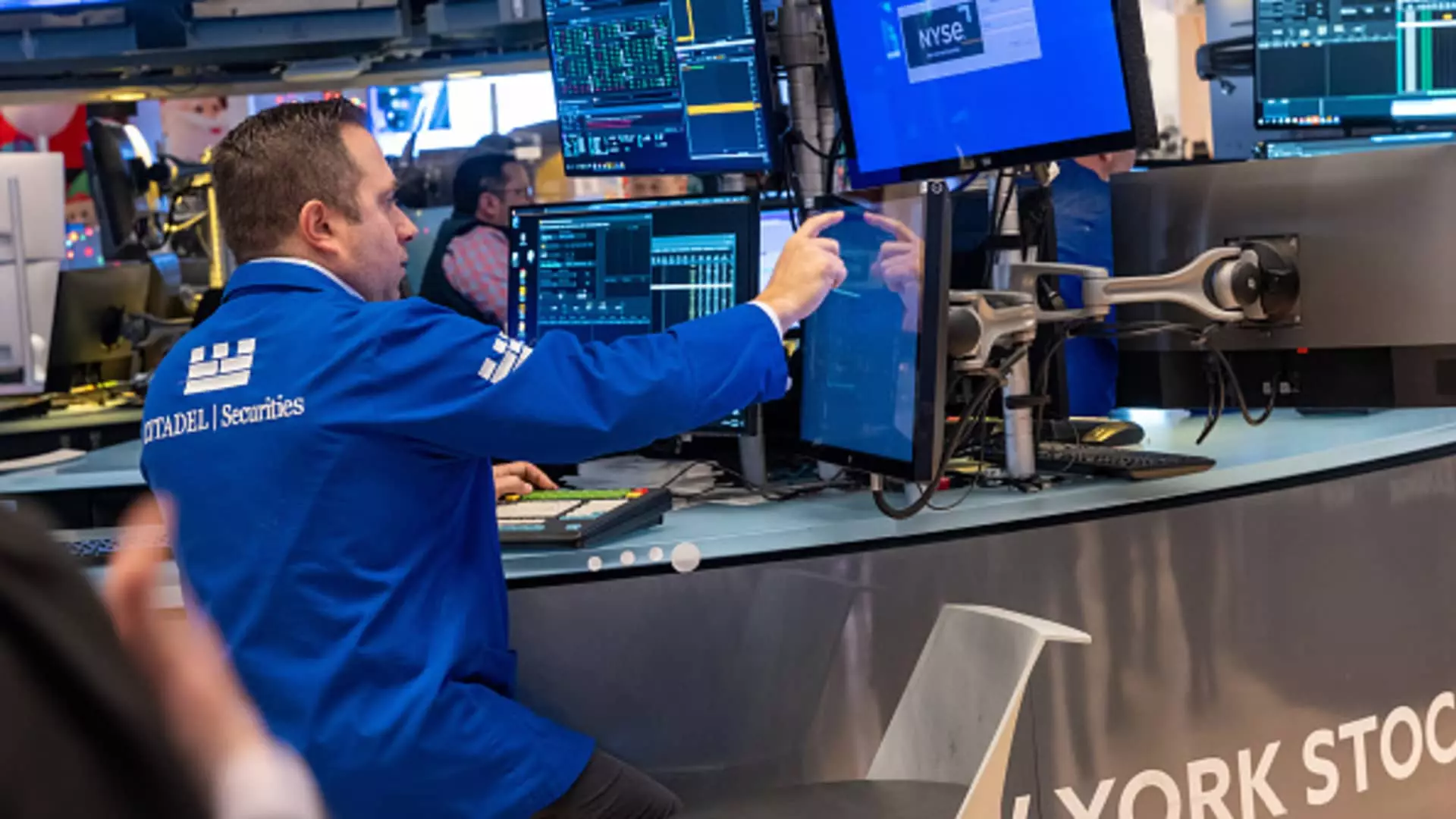The stock market is no stranger to volatility, and recent fluctuations were particularly pronounced following the release of a surprisingly positive jobs report. The performance of major indices like the Dow Jones Industrial Average, S&P 500, and the Nasdaq Composite mirrored the turbulent economic sentiment, illustrating the complex relationship between economic indicators and stock market reactions. On a Friday that saw the Dow plunge by 592 points, or 1.4%, it became evident that good news for the economy could translate to bad news for the markets.
December’s job figures indicated a significant increase in U.S. payrolls, with growth clocking in at 256,000—a figure substantially higher than the anticipated 155,000. Moreover, the jobless rate unexpectedly declined to 4.1% from the projected stable level of 4.2%. Typically, such robust labor market data would be celebrated, but financial markets reacted negatively, indicating a paradox of growth: the economy’s strength raised concerns over potential interest rate hikes.
As traders digested the implications of increased hiring, investor sentiment shifted in anticipation of the Federal Reserve’s next moves. The yield on the 10-year Treasury note surged to levels not seen since late 2023, reflecting a broader apprehension among market participants regarding the trajectory of interest rates. Economic experts, like Scott Wren from Wells Fargo Investment Institute, cautioned that while the job report signified an economy on solid ground, it also hinted at a deceleration in job growth in the foreseeable future.
The financial markets are particularly sensitive to interest rate expectations, which are projected based on economic data and Fed policy indications. Following the fresh jobs data, traders assigned a staggering 97% probability to the scenario of the Fed maintaining current rates in their upcoming January meeting, illustrating an expectation for stability in monetary policy, at least in the immediate term.
However, the odds of a rate cut in March fell sharply from 41% to approximately 25%. This decline reflects a rapidly shifting landscape, where optimism about job growth clouds the path to lower borrowing costs. The Fed had already initiated a quarter-point cut in December, but market participants rapidly recalibrated their expectations for future policy, anticipating a period without further reductions.
In addition to job growth, market sentiments were dampened further due to consumer concerns about inflation as reflected in the University of Michigan’s consumer sentiment index. January’s reading of 73.2 fell short of expectations, worsening market outlooks amid rising inflation expectations: the one-year outlook climbed to 3.3%, suggesting growing concern over price stability among consumers.
This anxiety regarding inflation reverberated through equity markets, with technology stocks—particularly sensitive to interest rate fluctuations—taking significant hits. Firms like Nvidia, AMD, and Broadcom experienced notable losses, indicative of a cautious shift among investors who are redirecting their portfolios in anticipation of tighter financial conditions.
Despite the day’s negative outcomes, LPL Financial’s chief technical strategist, Adam Turnquist, emphasized an important takeaway: the rising rates are primarily driven by a recovering economy, which bodes well for long-term market performance. He warned that though the initial reaction might suggest a sell-off is on the horizon, the underlying fundamentals—improved earnings potential and reduced recession risks—might create a more robust framework for sustained market growth in the future.
In the wake of the recent sell-off, all three major indices—S&P 500, Nasdaq Composite, and the Dow—are set to close the week in negative territory, reflective of a broader trend that investors must grapple with in a changing economic environment.
As market participants navigate the constellation of economic indicators, including job growth and inflation expectations, the challenge lies in reconciling seemingly positive data with market dynamics that react unfavorably. The financial arena continues to be one of high stakes, with decisions influenced by both tangible economic measures and the intangible sentiment of investors—making it an intricate and potentially turbulent landscape in the months to come.

Leave a Reply